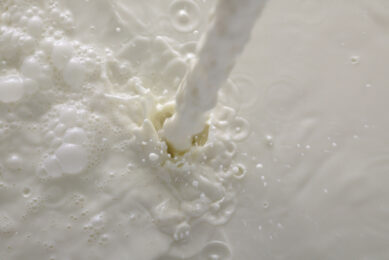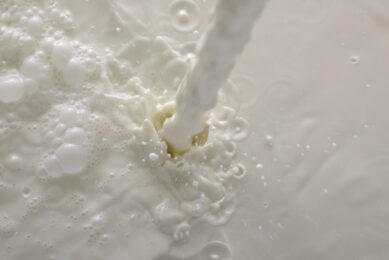Australia’s dairy sector still facing immense pressure
What does the future dairy industry look like down under in Australia? There is no crystal ball to tell us what the future will hold but according to reports the current drought situation in Australia is an indication of the future, the outlook therefore is that the industry will continue to experience pressure due to drought and low rainfall. Let’s look at the current situation in Australia’s dairy sector.
Australia is a country known for its beautiful landscapes and stunning scenery but the country holds another truth – drought is causing mayhem in the agriculture industry and the warmer temperatures may become more intense in the coming years. This has made headlines for years now and it is known that some of the hottest summers have taken place in the last few years since 2015. As a result of very little rainfall, the agriculture industry is becoming more and more impacted by the fact that farmers are struggling to stay afloat, making farmers face not only challenges but also the question of whether to continue farming. Many have already left the industry as intense weather pressure has gained momentum.
Murray- Darling Basin hit hard
New South Wales is a major agricultural region in Australia and one that has been hit hard by the drought situation. This area is under current discussion and many controversial talks have taken place. The rainfall reports about the south-eastern part shows that recently it has not been good. From March last year until August 2019, south-eastern, and large areas of western and northern Australia recorded rainfall totals in the lowest in history at 5 to 10% (meaning severe deficient to extremely low rainfall). In addition much of northern inland New South Wales has been particularly dry with large areas having record low rainfall. Murray-Darling Basin in New South Wales particularly is currently experiencing the worst drought in recorded history, the Department of Meteorology said that the deficiencies have been most extreme in the northern Murray–Darling Basin, especially in the northern half of New South Wales.
Rainfall deficiencies, Australia, 1 March 2018 to 31 August 2019.

According to the Australian Government of Agriculture (ABARES) in June 2019 rainfall was variable across the country and rainfall was particularly low across parts of south-eastern and central Australia. In contrast to this, July 2019 was dry across much of Australia and below average rainfall was recorded across cropping regions in New South Wales, southern Queensland, Western Australia and South Australia. The Australian Department of Agriculture has stated that in August 2019 it was dry across most of south-eastern and central Australia. Severely deficient to well below average rainfall was recorded across New South Wales, southern Queensland, parts of the west of Western Australia, much of South Australia, northern Tasmania and the south of the Northern Territory.
Man-made droughtThe Australian Government’s role in the current drought in the area has also been in the spotlight of late. In a news report by ABC news, Maryanne Slattery from the Australia Institute, has recently stated that water reforms, including the water market and the Murray-Darling Basin Plan (MDBP) have “made things worse”. “I think that governments have exacerbated this drought,” Slattery said. According to the ABC news report this week, “The dairy industry is on its knees and it’s got very little time left,” Slattery continued. Slattery was responding to a dairy farmer, who said the MDBP had created a “man-made drought”, leading to the loss of thousands of jobs in northern Victoria. The Victorian farmer, Natalie Akers, from Tallygaroopna, said Northern Victoria produces 80% milk in the basin, and has lost 5000 jobs, the common wealth has taken 25% of water that was previously available to farmers, the basin plan is a man-made drought.  In a further response Slattery spoke of government mismanagement for example, “We’ve had increased extractions in the northern basin with the increase of flood-plain harvesting,” she said. “We’ve got changes to the Barwon-Darling water sharing plan, which take all of the water in the river at low flows. In a further response Slattery spoke of government mismanagement for example, “We’ve had increased extractions in the northern basin with the increase of flood-plain harvesting,” she said. “We’ve got changes to the Barwon-Darling water sharing plan, which take all of the water in the river at low flows.In response to this discussion with Maryanne Slattery, David Littleproud, Federal Minister for Water Resources and Drought, said they could have ended up with a plan that was far worse for producers. Photo: David Littleproud, Federal Minister for Water Resources and Drought. Credit: Wikipedia/ Department of Foreign Affairs and Trade |
Milk production, feed
ABARES further reported that compared to the 2017/18 period, Australia’s milk production in 2018/19 was around 5.7% lower. Dry conditions as a result of the drought hiked the price of water and fodder in 2018/19 and tightened profitability in some dairy-producing regions. It said that feed prices remain high but have declined in recent months.
High opening milk price will encourage milk production in businesses with a lower reliance on purchasing inputs such as feed and water. If seasonal conditions improve, farms with sufficient feed will look to restock. It further added that a movement of dairy cattle from the northern irrigation regions to southern regions could limit a fall in milk production.
Pasture and soil moisture
Below average winter rainfall and low soil moisture limited pasture production across large areas of southern, western and central Australia. For the 3 months to August 2019, modelled pasture growth was extremely low to well below average across large areas of New South Wales and South Australia, parts of southern Queensland, the south of the Northern Territory and parts of Western Australia. In contrast, above average pasture production across much of Victoria, southern South Australia and north-eastern Queensland is likely to enable farmers to rebuild stock numbers and provide opportunities to replenish fodder supplies, ABARES added.
Crippling financial pressure is forcing an Australian dairy farmer and master breeder to quit the dairy industry there and sell her farm once alternative employment can be found. Read further…
Some help is at hand
This crippling reality in Australia does however come with some help, in the form of charities and organisations that help farmers who are drought stricken. Rural Aid, founded in 2015, is a charity that launched Buy a Bale campaign, which Australians have made donations to allowing the distribution of fodder, hampers and more. In 2018 Rural Aid started the development of a specialised mental health counselling programme, 100% fully funded to support rural communities. Rural Aid also runs programmes like Farm Army, Farm Rescue all assist farmers during hard times, with volunteers providing support for those in need. The droughts across the country is a reality many farmers are living with and programmes like these extend a helping hand so that farmers have somewhere to turn to, in order to provide some relief. Farmers needing assistance can also reach out to the Department of Agriculture in Australia for drought and rural support. The impact of the droughts experienced in Australia is not only a financial burden in terms of prices and higher feed costs, however, the impact has a major effect on the mental health of many farmers. With programmes like these in Australia and with the assistance of health counsellors the aim is to help reduce stress, domestic violence, suicide, an in addition to this also provide an environment for better mental health in rural communities.
In October 2019 the South Australian Government announced that it is considering providing council rate relief to drought-affected farmers as the state opposition claims that South Australia is way behind other state government support, according to a report. Farmers in the South Australia have said that farmers are missing out on funds and that more funding will make a huge difference and ease the financial burden currently being experienced.
Dairy outlook
Dairy Australia, the national services body of the Australian dairy industry, indicated that “Australian dairy farmers have entered a season of record farmgate milk prices but are challenged by high input costs and an outlook for dry conditions for the rest of the year with those in northern Australia facing a second year with few feed options available.”
In a podcast in October, Charlie McElhone, Dairy Australia’s Trade and Industry Strategy group manager, talked to industry analyst Sofia Omstedt about the latest Dairy Situation and Outlook report. It seems that the challenging season will continue which will put pressure on the industry. A main topic focused on what is driving current farmgate milk prices, Omstedt stated that currently Australia is seeing record high farmgate milk prices – this is pushed by two factors: “Strong competition from milk amongst Australian processors as well as very well balanced global market fundamentals.” She further stated that there is “robust demand for dairy and steady supply of dairy across the nation which is keeping prices well supported. In addition to these factors the weak Australian dollar has helped improve Australia’s cost competitiveness in overseas markets.”
For the coming months across the country drought and low rainfall will continue, with dry conditions and hot and warm weather. Warm weather deteriorated soil moisture making it more difficult to grow feed, with expectations of dryer than average conditions, she said. Feed availability will be an issue this year. In terms of milk supply, the current forecast sees a continued drop of 3% – 5% for the year. In terms of demand for dairy, China and South East Asia (SEA) is a major market. Imports to China and SEA is up 7.2% and 10.2% for the year. The current US-China trade dispute has created more room for imports to China from other countries, the podcast revealed. The domestic market though is still the largest market for Australian dairy.
ABARES added in a dairy outlook report in September that the 2019/20 farmgate milk price forecast is AUS $0.51 per litre. This is a AUS$0.03 per litre upwards revision from Agricultural commodities: June quarter. The 2019/20 season opened with comparatively high Australian farmgate milk prices compared with recent years.
In short
It is not only in Australia where the climate has played havoc on the sector, weather extremes are taking place globally with the shift in climate and hence the effect on agriculture all over the world. Taking all these facts into account and considering that the drought situation is getting worse in Australia, it is undoubtedly clear that Australia’s agricultural sector will in the foreseeable future remain under pressure. There is immense pressure on farmers as they struggle with stretched water supplies, higher feed costs and the culling of livestock because there isn’t enough water and feed, resulting in farmers facing the fact that leaving the industry is very much a reality. Dairy farmers continue to express frustration and anger and they have to consider many factors in how to deal with the pressures of drought, low rainfall, challenging soil conditions and government decisions that impact the agriculture industry in the country.
There are however some other aspects to consider that supports the sector, like the record farmgate milk prices, higher demand for dairy in China and SEA as well as Australia’s price competitiveness in overseas markets. With the forecasts of the warmer weather intensifying and the unrelenting drought, Australia’s dairy industry and it’s position in the global market remain in the spotlight.
Join 13,000+ subscribers
Subscribe to our newsletter to stay updated about all the need-to-know content in the dairy sector, two times a week.










